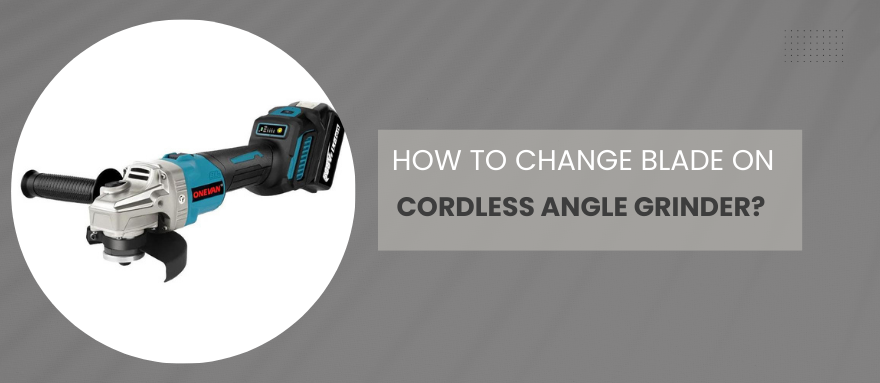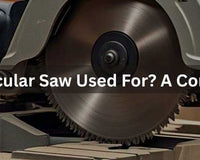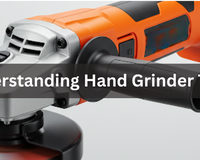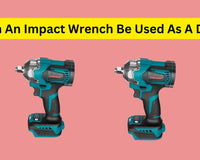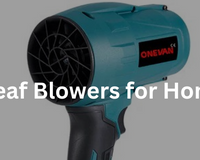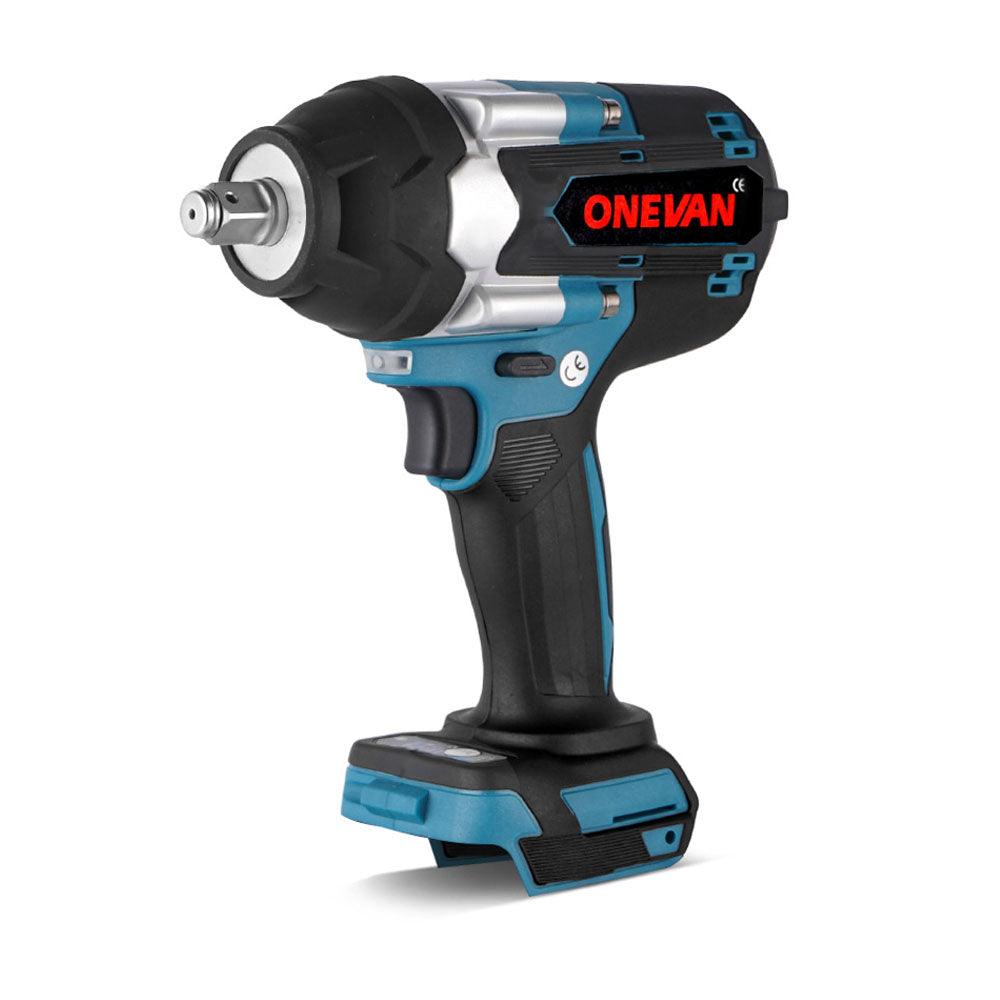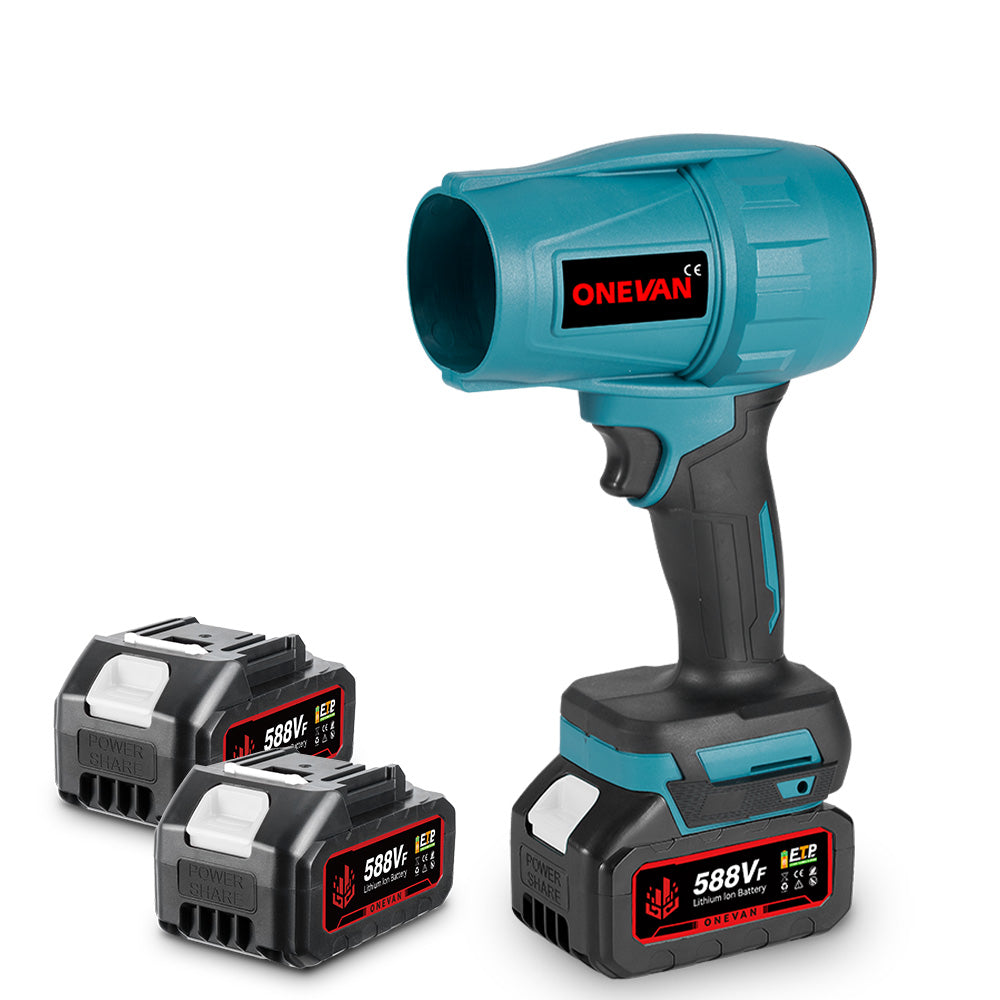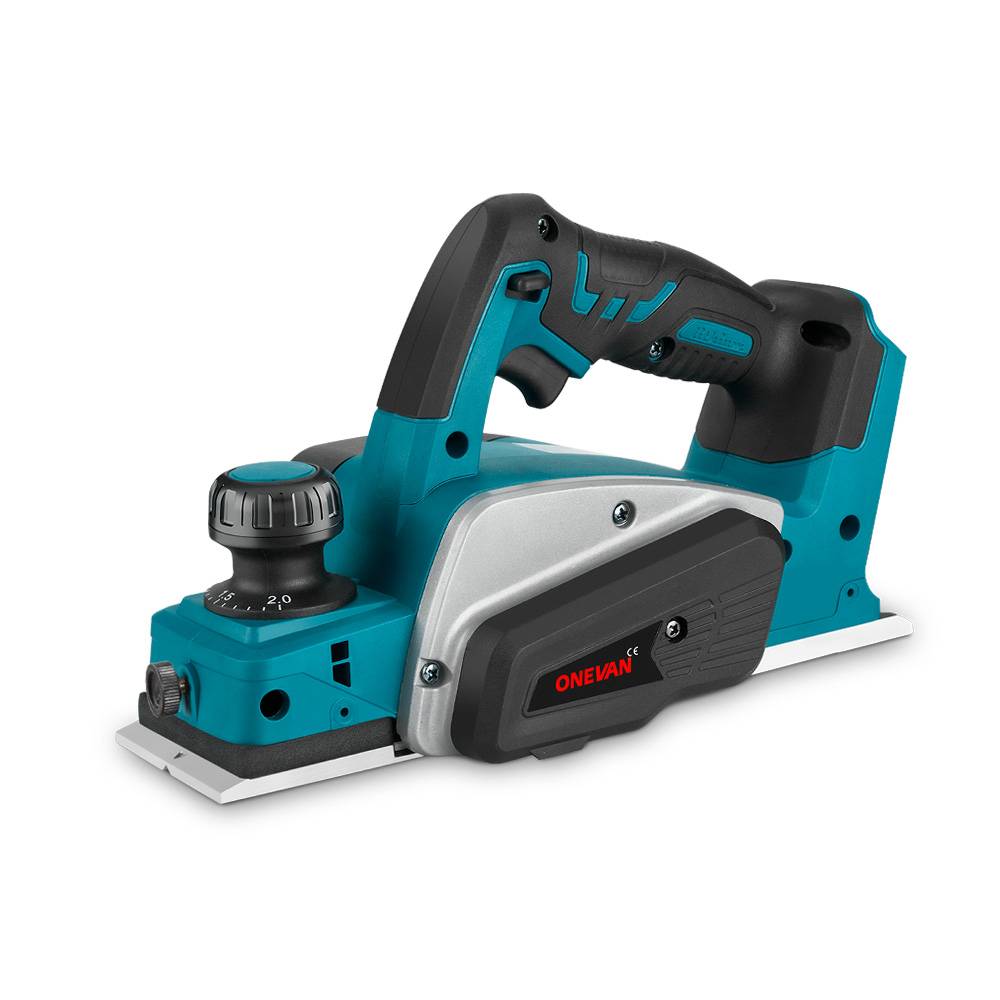The easiest way to remove an angle grinder disc is by incorporating a special wrench that usually comes with the tool. Replacing a blade on your cordless angle grinder is pretty simple. In a couple of minutes, you can change the blades using minimum tools. Today, in this article, we are going to explain how to change an angle grinder wheel.
You just need to follow a few simple steps that we have given below and take the necessary safety precautions; you can swap new blades effortlessly.
1. Blade Types of Cordless Angle Grinder and Their Applications
Angle grinders are very useful tools that can be used for several purposes. However, you just need to install specific wheels following your project requirements. Let's read about the most common wheels.
Wire Wheel:
Wire wheel is incredibly versatile like a cleaning expert. It's got a bunch of little metal bristles that love to scrub away rust, old paint, and gunk. Think of it as a metal-munching, dirt-destroying dynamo! It can clean, deburr, scale, and polish effectively.
Flap Disc:
A flap disk is pretty like flat sanding pad with several tiny flaps. These flaps are made of abrasive material. It's covered in tiny sandpaper-like bits that make metal surfaces super smooth. The flaps grind away at the metal to make it smooth.
Flap Wheel:
This is best for shaping materials. It’s like the flap disc's flexible cousin, perfect for getting into tricky spots and making curved surfaces look amazing. It’s the contortionist of the tool world!
Cutting Disc:
Cutting disc has very sharp blades. It’s super thin and sharp, ready to slice through metal like butter. Imagine it as a tiny, high-speed tool, taking on metal with precision.
Cutting Wheel:
Cutting wheels are best for heavy-duty work. It's thicker and stronger than the cutting disc, built for tackling tough jobs like cutting through thick metal plates. Think of it as the muscle-bound hero of the group.
If you are tired of struggling with dull, uneven metal surfaces, consider the ONEVAN Grinding Wheel Metal Polishing Sheet Set. This comprehensive kit is your one-stop solution for tackling a variety of metalworking tasks. with precision and efficiency.
- Grind to Perfection: The grinding wheel effectively removes material, allowing for precise shaping of your metal.
- Clean and Deburr with Ease: The wire wheel is a master at tackling rust, grime, and burrs, leaving your metal clean and ready for the next step.
- Cut Through Challenges: The aluminum oxide cutting disc is designed to efficiently slice through various metals, facilitating your projects.
2. Step-by-Step Guide to Changing the Blade From a Cordless Angle Grinder

The most common way to change the blade on your cordless angle grinder is with a spanner wrench. When you buy a new angle grinder, it comes with two special but different keys that look like little wrenches. These wrenches fit into two holes on the part you want to tighten or loosen.
Let’s read these steps in detail.
Step 1: Safety First, Captain!
Okay, before starting the process of changing blades from angle grinder cordless, let's make sure you're safe. The first step is to remove the battery from the angled grinder cordless. Next,
- Wear safety glasses to protect your eyes from flying debris and dust generated during cutting or grinding.
- Gloves to secure your hands
- And a dust mask to keep the bad stuff out of your lungs.
Step 2: Find the Spindle Lock
Your grinder has a spindle lock button, typically located on the top or side. This is the spindle lock. Imagine it as a pause button for the spinning part.
Step 3: Lock it Down
Press and hold the spindle lock button. This is like putting a lock on the spinning part to keep it still while you work.
Step 4: Loosen the Nut
Your grinder comes with a special wrench. However, it is very useful. Use it to turn the nut holding the blade in place counterclockwise. Just loosen it, not all the way.
Step 5: Double Check Your Work
Ensure the spindle is locked and the nut is loose, which allows for safe removal of the blade.
Step 6: Blade Removal
Carefully take off the old blade. Remember, even old blades can be sharp, so treat them with respect.
Step 7: Spindle Checkup
Look at the spindle, the metal rod where the blade goes. Make sure it's healthy and clean. A clean spindle is like a fresh bed for your new blade.
Step 8: New Blade Time
Install the new blade, ensuring the arrow on the blade aligns with the direction of rotation indicated on the grinder.
Step 9: Tighten it Up
Put the nut back on and tighten it a little with your wrench.
Step 10: Lock it In
Press the spindle lock again and tighten the nut fully. Now your new blade is locked in place!
Step 11: Balance Check
Spin the blade gently. It should spin smoothly, like a ballerina. If it wobbles, it's not happy.
Step 12: Test Run
Put the battery back in and turn it on briefly. Do this away from you and while wearing your safety gear.
Step 13: Say Goodbye to Old Blade
Dispose of the old blade safely by wrapping it in cardboard or placing it in a designated recycling container to prevent injury. Don't throw it away carelessly. Many hardware stores have recycling programs for tools.
3. Tips for a Successful Blade Replacement on a Cordless Angle Grinder
Tips 1: Use the Right Tool
Your grinder probably came with a special wrench. It fits perfectly. Don't try to use other tools; it's like using a screwdriver to open a jar. The right tool makes the job much easier.
Tips 2: Keep it Clean
Maintaining a clean grinder is essential for optimal performance and longevity. Wipe away any dirt or oil before putting on a new blade. It's like giving your grinder a shower. A clean blade and grinder work better together.
Tips 3: Make Sure The Blade Fits
Your new blade should comfortably fit your grinder, just like a hand in a glove. If it doesn't fit right, it won't work as well and could be dangerous.
Tips 4: Blade Orientation Matters
Ensure that the blade is installed in the correct orientation to avoid operational issues. Most blades have an arrow indicating the correct direction of rotation; installing the blade incorrectly can lead to poor performance or accidents. Imagine it's a one-way street for your grinder. Putting it on the right is like following the rules of the road - it keeps things safe and smooth.
Tips 5: TightenThe Blade Right
The tightness of the blade nut is crucial for safe and effective operation. Achieving proper balance is crucial for safe and efficient operation. Over-tightening can strain the grinder's components and potentially damage the tool. Conversely, a loose nut would wobble the blade, increasing the risk of accidents. Aim for a secure fit without excessive force.
4. Common Mistakes and Solutions for Changing the Blade From a Cordless Angle Grinder
Neglecting Safety Gear
Always wear safety glasses, gloves, and a mask when using a cordless angle grinder. These protective gear items will help safeguard your eyes, hands, and lungs from potential hazards, such as debris and dust particles.
Power Down:
Make sure the grinder is completely powered off. Remove the battery or unplug the power cord. This important step prevents accidental start-up and potential injuries.
Gather Your Tools:
Find the special wrench that comes with your grinder. This tool is specifically designed for tightening and loosening the blade nut. Do not try to use pliers or adjustable wrenches because they will make the nuts vulnerable to damage.
Secure the Blade:
To immobilize the blade during the replacement process, activate the spindle lock. This mechanism effectively arrests the spindle, enabling the safe removal and installation of the blade.
Loosen the Blade Nut:
Gradually loosen the blade nut counterclockwise using an appropriate wrench. Be careful not to overtighten or lose it.
Remove the Blade:
Once loose, carefully take out old blades, being cautious of sharp edges, and dispose of them properly.
Inspect the Spindle:
Clean any debris or residue off of it before installing a new blade to ensure proper fitting and performance.
Install New Blade:
Align the new blade with the spindle, then slide it onto the shaft, ensuring secure positioning without wobbling.
Tighten Blade Nut:
Apply a firm yet judicious torque to the blade nut when securing it. A securely fastened blade is essential for both ensuring optimal performance and operator safety.
Test Blade:
Conduct a brief test run of the grinder to verify the correct blade installation and functionality. Check for any unusual vibrations, noises, or imbalances.
Improper Disposal of Old Blades
Once you've replaced the new blade, make sure to wrap up the old blade tightly. These blades are manufactured with sharp edges! It's best to recycle it if you can, but if not, just make sure it's safely tucked away.
5. Troubleshooting Common Issues with Blade Replacement on a Cordless Angle Grinder

Problem 1: The Blade Is Loose Or Does Not Stay In Place.
First, make sure you have purchased the right size blade. If it's the right one, try tightening that nut a bit more. It's not too tight, just firm. Also, double-check washers/spacers - they sometimes like to disappear.
Problem 2: The Blade Is Difficult Or Impossible To Remove Or Install.
Blade stuck in there like glue? Don't force it! Press that spindle lock button. If it's still stuck, a few drops of oil will make it flexible. Let it sit for a bit, then try again. For a new blade, make sure the spindle and the blade hole are clean.
Problem 3: The Grinder Vibrates Excessively When The Blade Is Changed.
If the grinder vibrates excessively, it typically indicates that the blade is not properly seated. Take it off, check for gunk, and make sure it's centered. If it's still shaking, the blade might be toast. Time for a new one!
Problem 4: The Blade Spins Loosely On The Spindle.
If the blade spins loosely on the spindle, it may not be properly secured. It might be too big for the spindle. Check the size. Also, don't forget that little inner flange - it's easy to miss.
Problem 5: Difficulty Unlocking The Blade
Sometimes, it needs a little nudge. Try turning the blade while pressing the lock. If that doesn't work, there might be some gunk in there. A quick blast of air can help.
Problem 6. Blade Does Not Spin After Being Installed
Check if you put the battery back in (it happens!). If that's not it, the blade nut might be too tight. Loosen it a bit. Also, make sure the spindle lock is completely off.
Problem 7. Grinding Sound But No Cutting After Being Installed
Grinder's making noise but not doing its job? You probably put the blade on backward. There's usually an arrow or writing on the blade to show the right way.
8. Blade Keeps Breaking Frequently When Used
Blades disappearing faster than ice cream on a hot day? You might be using the wrong blade for the job or pushing too hard. Let the blade do the work. Also, check the grinder's speed - it might be too high.
6. Conclusion
By following the above steps and safety rules, you won’t need any professional to do this job. It is essential to follow proper safety protocols and guidelines for blade selection and maintenance to ensure safe and effective operation. Always address proper safety dress code, use the correct tools, and inspect the tools regularly.
7. FAQs
1.How to change the angle grinder blade without a tool?
To change the blade on an angle grinder without a specialized tool, follow these steps:
- Unplug the grinder or remove the battery (for cordless models).
- Use a wrench to loosen the nut securing the blade.
- Remove the old blade.
- Install the new blade, and ensure you have aligned properly.
- Tighten the nut.
2.Difference between an angle grinder and a cut-off grinder
An angle grinder is a handheld power tool used for abrasive cutting, grinding,, and polishing. Its interchangeable cutting disc makes it powerful.
On the other hand, a cut-off grinder has a lower horsepower range. These can only perform low-power cutting tasks.
3.Do Cordless Angle Grinders Cut Metal?
The angle grinder is a widely used tool in repairs and construction, known for its versatility. Thanks to a wide range of equipment, the angle grinder can cut and grind metal, brick, granite, concrete, and ceramic tiles, perform cleaning work, and even saw wood.
4.Can I fit a larger blade into my cordless angle grinder?
Avoid using larger discs on your angle grinder. The bigger disc will spin too fast, making the grinder hard to manage. It's very dangerous.
5.Is it possible to use a smaller grinder disc on cordless angle grinders?
Yes, you can install a smaller blade on a cordless angle grinder. As long as the smaller blade fits securely on the spindle and does not require removing the guard, it should be safe to use. However, always consult your grinder’s manual for specific recommendations and safety guidelines.
6.Can you put a metal-cutting blade on a cordless angle grinder?
Of course, you can use a metal-cutting blade on a cordless angle grinder. Just make sure to select the appropriate size and type of blade according to the metal. Always put on safety gear when using an angle grinder.
7.Do you even put wood blades on cordless angle grinders?
Using wood-cutting blades on an angle grinder poses safety risks for both the operator and the tool. Cordless angle grinders are particularly designed for abrasive tasks. Subsequently, they are not equipped with the essential features for perfect woodcutting. For woodworking circular saws or jigsaws are more suitable.

